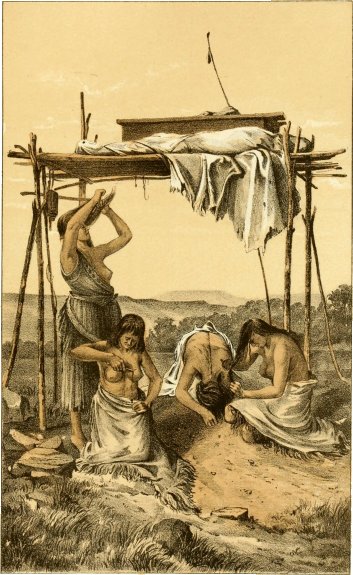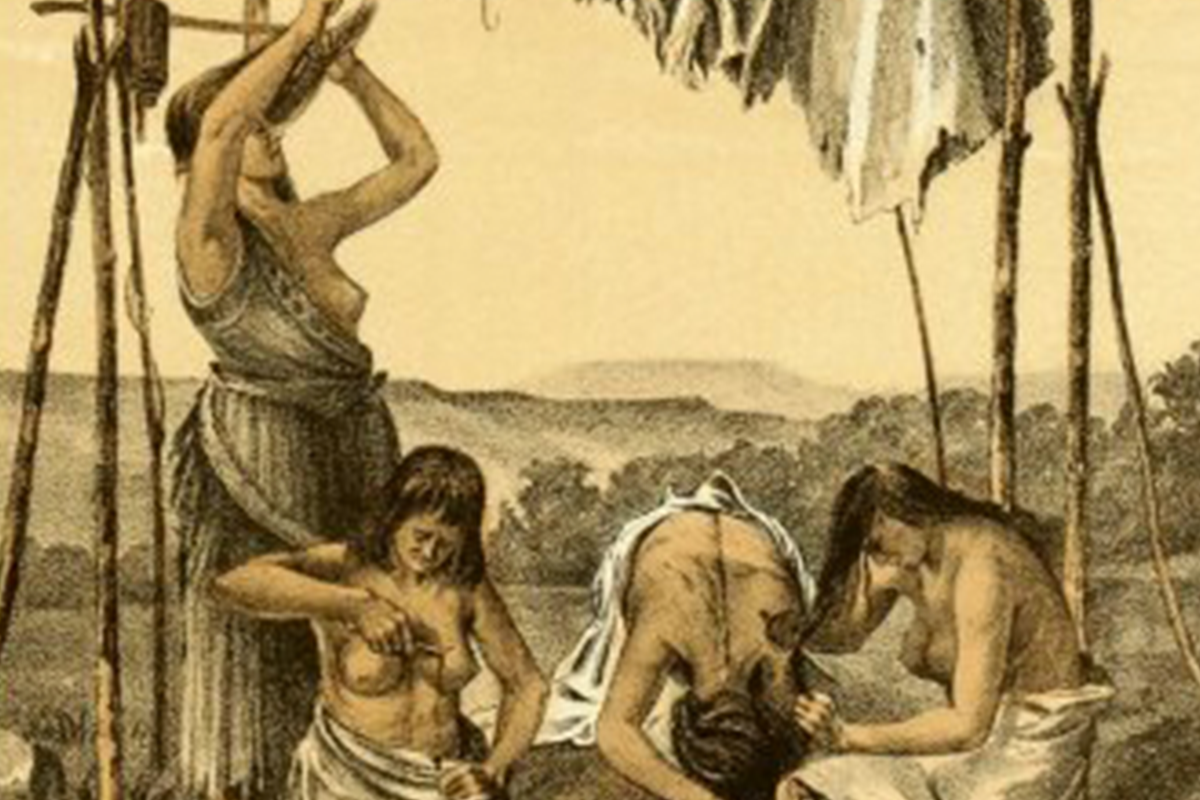
American Indian burials were as diverse as the Native Americans culture and languages. Keep in mind these customs could vary within a tribe. Some Plains Indians placed their dead on scaffolds or in trees while others buried them. If the ground was frozen, they might they have no choice but to bury them elevated. This would allow friends and relatives to visit. The rites were focused on the afterlife and they left food, personal possessions. They might even bury the deceased’s favorite war horse. During the 19th century the traditional Comanche burial custom was to wrap the body in a blanket, place it on a horse behind a rider ride off in search of a proper burial place such a cave and then seal the entrance. The Cherokee deceased were buried with personal belongings or they might be burned at the gravesite. The Mohave Indians in Arizona cremated their dead. The Apache would dress the deceased in the finest attire the family could afford, wrap them in a blanket and bury them, along with his favorite horse in a deep crevice and conceal it.
Perhaps the most interesting is the nation’s largest tribe, the Navajo, who follow rituals and bury the deceased in unique ways to keep order. They believe that birth, life and death are part of the natural order.
They don’t look forward to the afterlife and the funeral is a no frills affair. For example they chose certain family members to mourn and they have to follow certain rituals. They bathe and dress the body in special clothes. If the deceased died in the Hogan, family members burn it along with any remaining possessions. They also believe that when someone dies, they return to the underworld from which they descended. Their rituals required they be very careful when burying their dead so their spirits or Chindis won’t return to haunt the living. It’s believed that contact with a corpse can bring sickness, bad luck or even death. For that reason traditional Navajo do not even speak of the dead.






